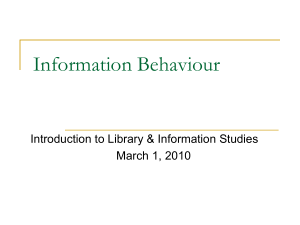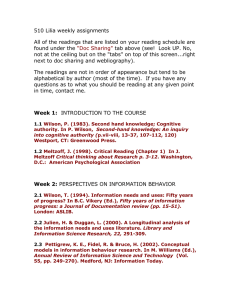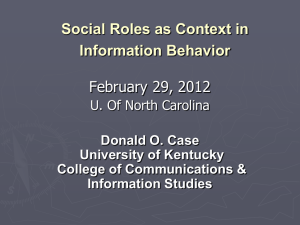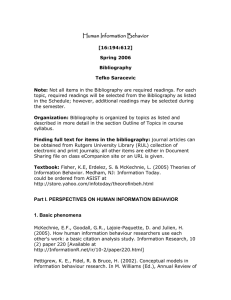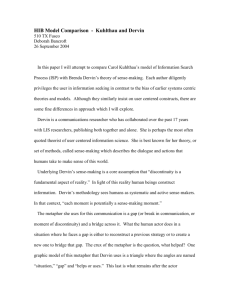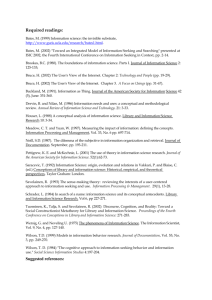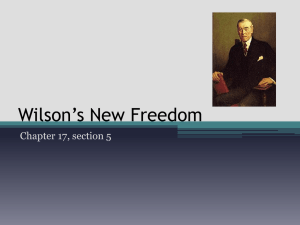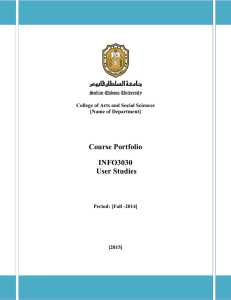Human Information Behavior (HIB)
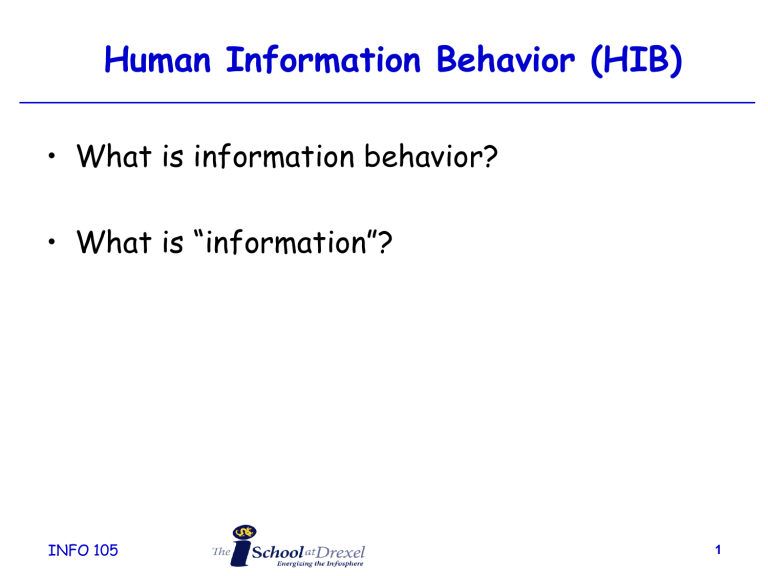
Human Information Behavior (HIB)
• What is information behavior?
• What is “information”?
INFO 105
1
Human Information Behavior (HIB)
“the totality of human behavior in relation to sources and channels of information, including both active and passive information seeking, and information use”
( Wilson, 2000 )
“how people need, seek, give, and use information in different contexts”
( Pettigrew et al, 2001 )
INFO 105
2
What is your model of “information retrieval”?
INFO 105
3
The classic information retrieval model
Document
Document representation
Query
Information
Need
Match
INFO 105
4
Information-seeking activity from Hancock-Beaulieu (1989)
INFO 105
5
Paradigm shift in studying information needs & uses
• System-oriented
– Examines use of information systems and information services; barriers to the use; satisfaction reports.
– Tries to explain differences: demographic, sociological, life style, task description, etc
• User-centered
– “information” as something constructed by people
– Understanding information use in particular situations
– Asks “how questions”
INFO 105
6
Information needs & uses
- two central concepts
• Information?
– Any message, document or information resource
– Any publicly available symbolic material
– Any data
• Information need: a state of needing “information”
• Information as
– Capable of transforming image structures
– Alters the cognitive structure of a receiver
• Information needs as
– When a person recognizes something wrong in state of knowledge and wishes to resolve the anomaly (Belkin, 1978)
INFO 105
7
An information behavior model as a way of thinking of the field
Context
?
Choice of channel?
adopted from Wilson 1999: Models in Information Behaviour Research,
Journal of Documentation, 55(3)
INFO 105
8
Information needs and seeking
INFO 105
(adopted from Wilson 1999:
Models in Information
Behaviour Research, Journal of
Documentation, 55(3))
9
Krikelas’s Information-Seeking Behavior Model
INFO 105
Adapted from Krikelas, James
(1983) Information seeking behavior: Patterns and concepts.
Drexel Library Quarterly, 19, 5-20.
10
Sense-Making theory by Dervin
INFO 105
Facing a gappy situation. From
“Sense-Making Methodology:
Communicating Communicatively
With Campaign Audiences” by B.
Dervin & M. Frenette, 2003.
11
Bates’ berry-picking model
• Real-life queries change and evolve during the course of searching
At each stage, with each different conception of the query, the user may identify useful information and references. In other words, the query is satisfied not by a single final retrieved set, but a serious of selections of individual references and bits of information at each stage of the ever-modifying search. (1989, p. 410)
INFO 105
12
Kuhlthau’s Information Search Process
• ISP stages:
– Initiation
– Selection
– Exploration
– Formulation
– Collection
– Presentation
• Each stage represents the primary task at each point; Thoughts, feelings, and actions commonly experienced were identified in each stage of the process
• Uncertainty principle: uncertainty is a cognitive state that commonly causes affective symptoms of anxiety and lack of confidence
INFO 105
13
“Browsing is a collaborative process”
• Collaboration is an important aspect of searching online IR systems
• Requires explicit computerized support
• Collaborative work in digital library
• ARIADNE system
INFO 105
14
